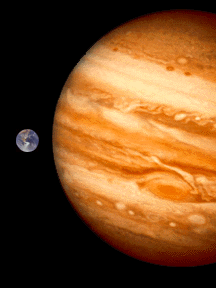This is a drawing of the interior of Io.
NASA
A Comparison of Jupiter and the Earth.
Jupiter is the largest planet in the solar system. Jupiter is much larger than Earth, as shown in the picture. Jupiter is a gas giant planet made mostly of hydrogen. The table below provides a comparison of characteristics of Jupiter relative to Earth values.
|
Characteristic
|
Relative to Earth
(Earth = 1)
|
Absolute Value
|
|
Mass |
318
|
1.8986 x 1027 kg
|
|
Radius
|
11.2
|
71,492 km
(44,423 miles) |
|
Mean Density
|
0.240
|
1.33 g/cm3
|
|
Rotation Period
|
0.415 |
9 hours 56 min. |
Mean Orbital
Distance
|
5.204 AU
|
778 x 106 km
(483 x 106 miles) |
|
Orbital Period
|
11.9 Earth years
|
-----
|
|
Orbital eccentricity
|
2.928 |
0.489 |
Inclination to
ecliptic |
-----
|
1.304° |
Atmospheric
Temperature
|
-----
|
-148° C to >200° C
(-234° F to >392° F) |
You might also be interested in:
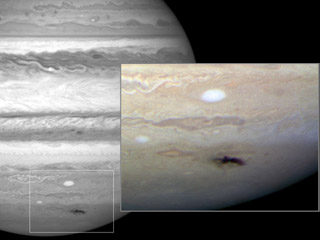
Anthony Wesley is an astronomer in Australia. One night in July 2009, Wesley noticed a dark spot on Jupiter that hadn't been there before. He had discovered the remains of a huge impact on Jupiter! A comet
...more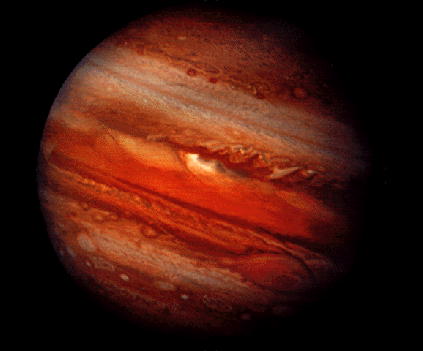
Jupiter is the biggest planet in our solar system! It's also very bright in the sky. We don't know who discovered it, but we do know the ancient Greeks named the planet after the god, Zeus. The United
...more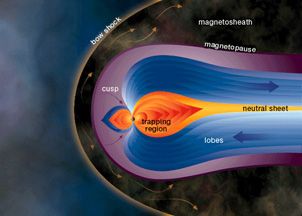
Jupiter's magnetosphere is very special. It is the biggest thing in the entire solar system. Not only is it big enough to hold all of Jupiter's moons, but the sun itself could fit inside. It goes all
...more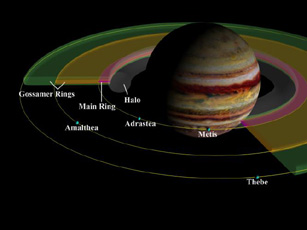
You may think Saturn is the only planet with rings. It is not! Jupiter has rings, too. They aren't as easy to see as Saturn's, but they are there! Saturns rings are made of ice and are very bright. Jupiter's
...more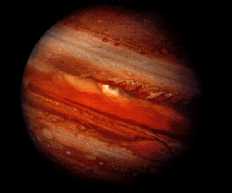
The giant planets have definitely changed since their formation. But how much remains to be seen. Most of the original air of the giant planets remains in place. (The earth-like planets lost most of their
...more
The mesosphere of Jupiter is a region of balance between warming and cooling. That essentially means that nothing happens there. Except for diffusion, the atmosphere is still. Upper reaches of the atmosphere,
...more
As on Earth, the atmosphere of Jupiter consists of a troposphere, stratosphere, mesosphere, and thermosphere. The troposphere is the region where the visible clouds are to be found. The stratosphere, as
...more
